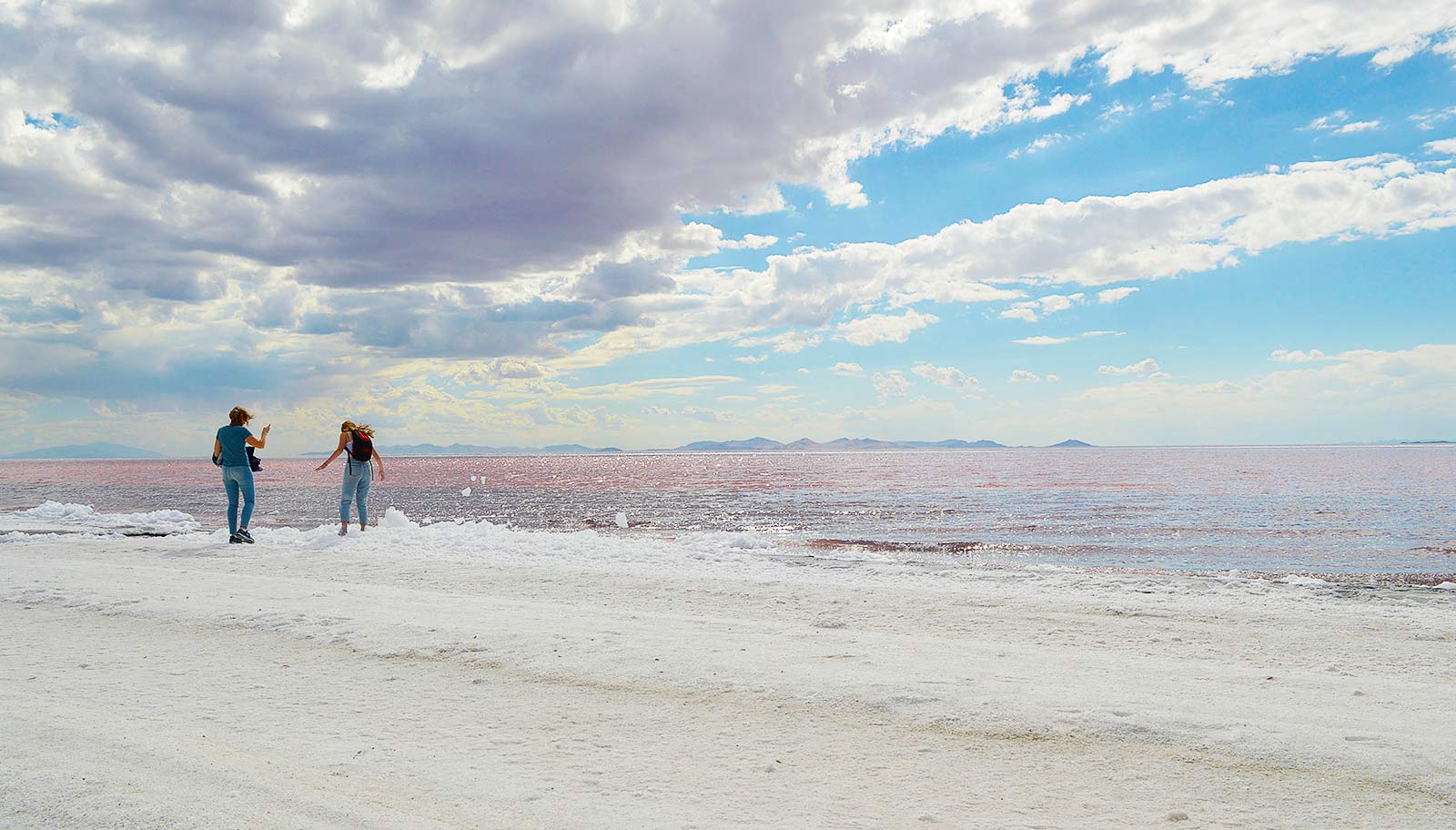What Is Land Art?

The Utah Museum of Fine Arts is situated in the unique and spectacular landscape of the North American Great Basin. From the Museum, you can see the snowcapped Wasatch Mountain Range to the east, the Oquirrh Mountain Range to the west, and the Salt Lake Valley to the south. To the northwest, you can see Great Salt Lake—a remnant of prehistoric Lake Bonneville—and the arid desert, beyond which lie the ethereal salt flats.
Utah's striking landscape has inspired artists for centuries, from the ancient people who carved petroglyphs in rock, to the pioneers that surveyed grand vistas with photography and plein air paintings, to the Land artists of the 1960s, 70s, and today. At the UMFA you can engage with objects and interpretive materials that will connect you with great earthworks like Robert Smithson's Spiral Jetty (1970) and Nancy Holt's Sun Tunnels (1973-76), both located here in Utah, and help you better understand our human impact on the land. Learn about these fascinating and important Utah artworks, watch for upcoming Land art-related events, and get the necessary tools to prepare for your own Land art excursion.
The Art Assignment, a weekly PBS Digital Studios production that explores art and history, recently visited Utah to explore our world-class Land art sites. Watch the video here.
What is Land art?
Land art is made directly in the landscape by sculpting the land itself or by making structures in the landscape with natural materials. Land art, also known as earth art, was part of the wider conceptual art movement in the 1960s and 1970s. It was established by a group of pioneering artists who investigated natural sites, alternative modes of artistic production, and ways to circumvent the commercial art system.
What began as a trend in sculpture to incorporate natural materials like dirt, rocks, and plants quickly grew into a process-based approach to art-making in which the artist would make excursions into the surrounding environment to either collect objects or perform site-specific interventions. Some artists used mechanical earth-moving equipment to make their earthworks, while others made minimal and temporary interventions in the landscape. Artists typically documented their earthworks using photographs, films, and maps for exhibition in galleries. Land artists also made Land art in the gallery by incorporating natural materials from the landscape into sculptures and installations.
Land artists were especially attracted to the vast spaces and sublime emptiness of the American West. The austere environments of the Great Basin and the Colorado Plateau offered an abundance of space and material far removed from the urban centers of the art world. In Utah, we are fortunate to live in proximity to such grand artistic achievements, especially our own.
Click here to access a walking guide inspired by Spencer Finch's installation, Great Salt Lake and Vicinity. The walking guide will help you to explore the landscape and discover the vibrant colors around you.
